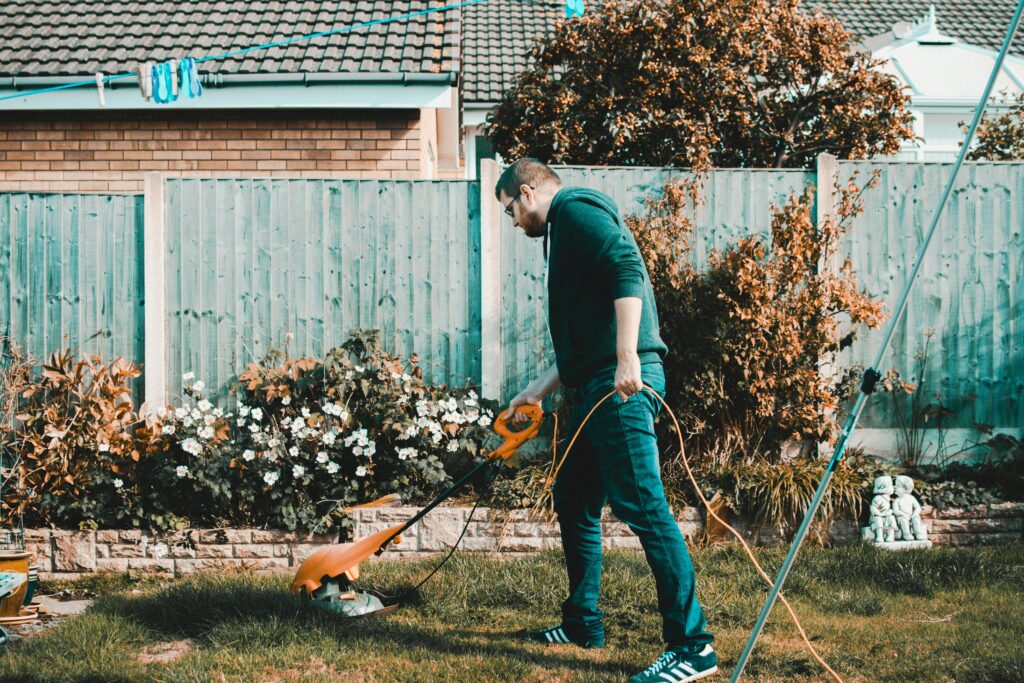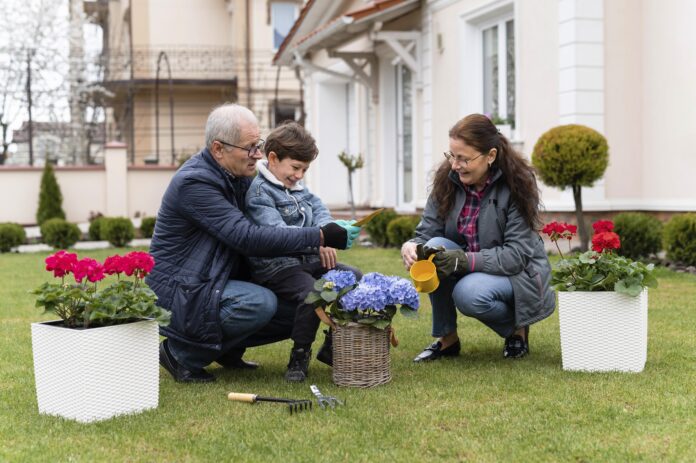Introduction
- Low-Maintenance Landscaping: Simplify Your Yard with Ease
- 1. Choose Native Plants
- 2. Drought-resistant plants and Succulents
- 3. Ground Covers Instead of Grass
- 4. Perennials for Year-Round Color
- 5. Mulch to Control Weeds and Moisture
- 6. Install Drip Irrigation Systems
- 7. Incorporate Hardscaping Features
- 8. Opt for Raised Garden Beds
- 9. Plant Shrubs That Require Minimal Pruning
- 10. Consider Artificial Turf for High-Traffic Areas
- Conclusion
For busy homeowners, creating a beautiful outdoor space often takes a back seat to other household tasks. Fortunately, a low-maintenance landscape doesn’t have to mean compromising on style. With a few strategic choices, you can create a lush, attractive yard that requires minimal upkeep. From drought-resistant plants to simple ground covers, these low-maintenance landscaping ideas can help you achieve a beautiful garden space without the time-consuming effort.
Creating a beautiful garden doesn’t have to mean endless hours of upkeep. With low-maintenance landscaping ideas, you can design an attractive outdoor space that requires minimal effort. Whether you want to reduce watering needs, simplify lawn care, or incorporate easy landscaping ideas, these tips will help transform your yard into a stylish and manageable oasis. From drought-tolerant plants to efficient ground covers, here are 10 ways to make your landscape look great with less work.
Low-Maintenance Landscaping: Simplify Your Yard with Ease

Designing a beautiful outdoor space doesn’t have to be time-consuming. With low-maintenance landscaping, you can create a visually appealing yard that practically takes care of itself. This approach involves choosing hardy plants, using efficient ground covers, and planning functional layouts that reduce regular upkeep. Whether you’re interested in drought-tolerant plants, perennial ground covers, or easy-to-install mulch beds, low-maintenance landscaping can help you enjoy a vibrant yard without the constant work.
1. Choose Native Plants
Native plants are adapted to local climates, soil, and ecosystems, making them a low-maintenance choice for your garden. These plants require less water, fertilizer, and pest control because they naturally thrive in their environment.
- Benefits: Native plants often require less watering and are resistant to local pests and diseases.
- Examples: Black-eyed Susans, coneflowers, and lavender in warmer climates; ferns, wild geraniums, or switchgrass in cooler climates.
2. Drought-resistant plants and Succulents
Drought-resistant plants are ideal for homeowners looking to reduce watering needs. Succulents, for example, are both attractive and hardy, coming in various colors, shapes, and textures.
- Why it works: These plants store water in their leaves, reducing the frequency of watering.
- Examples: Sedum, agave, yucca, and aloe vera are excellent choices for drought-prone areas.
3. Ground Covers Instead of Grass
Grass lawns can require regular mowing, fertilizing, and watering, which can be time-consuming. Consider ground cover plants as an alternative to grass in certain areas, particularly on slopes or difficult-to-mow spots.
- Options: Clover, creeping thyme, or moss are low-maintenance ground covers that also provide lush greenery.
- Advantages: Ground covers suppress weeds and often require minimal trimming, saving time and effort.
4. Perennials for Year-Round Color
Opt for perennials over annuals to reduce the need for replanting each year. Perennials grow back on their own each season, providing lasting beauty without the labor-intensive replanting cycle.
- Best perennials: Hostas, daylilies, and lavender add beauty and come back year after year.
- Tip: Choose varieties that bloom at different times to ensure color throughout the seasons.
5. Mulch to Control Weeds and Moisture
Adding a layer of mulch to your garden beds helps retain moisture, reducing the frequency of watering. Mulch also acts as a barrier to weeds, minimizing the time spent weeding.
- Types of mulch: Organic mulches like bark or wood chips break down slowly and provide nutrients to the soil over time.
- Application tip: Apply 2–3 inches of mulch around plants and flower beds to maximize moisture retention and weed suppression.
6. Install Drip Irrigation Systems
Drip irrigation is a water-efficient way to maintain a healthy landscape with minimal effort. Unlike sprinklers, drip systems target the roots of each plant, reducing water waste and soil erosion.
- Benefits: Saves time on watering and prevents overwatering.
- How to get started: Many garden stores sell DIY drip irrigation kits that you can install in a few hours.
7. Incorporate Hardscaping Features
Adding hardscaping features like gravel paths, stone patios, or rock gardens can drastically reduce the need for regular garden maintenance. Hardscaping requires no watering, mowing, or pruning, making it a practical addition to any low-maintenance yard.
- Ideas: Use gravel or stone pathways to connect garden areas, or add a seating area with paving stones.
- Tip: Rock gardens with small boulders and gravel areas can create interest and contrast without much upkeep.
8. Opt for Raised Garden Beds
Raised garden beds make gardening easier by elevating plants to a comfortable working height. They also allow for better soil drainage and can limit the spread of weeds, reducing the need for constant weeding and maintenance.
- Advantages: Raised beds offer control over soil quality and drainage.
- Low-maintenance tip: Use weed-blocking fabric at the base to prevent weed growth and make maintenance easier.
9. Plant Shrubs That Require Minimal Pruning
Certain shrubs require less frequent pruning, making them a great choice for low-maintenance landscaping. Evergreen shrubs, in particular, retain their shape and foliage throughout the year, providing a structured look without frequent upkeep.
- Top picks: Boxwood, juniper, and dwarf varieties of holly or cypress are excellent low-maintenance options.
- Why choose evergreens: They stay green all year, requiring minimal attention and adding lasting structure to your landscape.
10. Consider Artificial Turf for High-Traffic Areas
While not for everyone, artificial turf is an option for high-traffic areas that you want to keep green and lush without maintenance. Today’s artificial turf has a realistic look and requires no mowing, watering, or fertilizing.
- Perfect for: Families with pets or kids who need a play area.
- Advantages: Artificial turf can last for years and requires only occasional brushing to maintain its appearance.
Conclusion
Creating a beautiful, low-maintenance landscape doesn’t have to be challenging. By incorporating native plants, using drought-resistant options, and choosing hardy ground covers, you can reduce the time and energy spent on yard work. Simple additions like mulch, raised garden beds, and drip irrigation can further simplify your gardening routine. Finally, incorporating hardscaping or even artificial turf can give you the look of a well-maintained yard with minimal effort. With these ideas, you can enjoy a stunning, easy-care landscape that complements your busy lifestyle.














